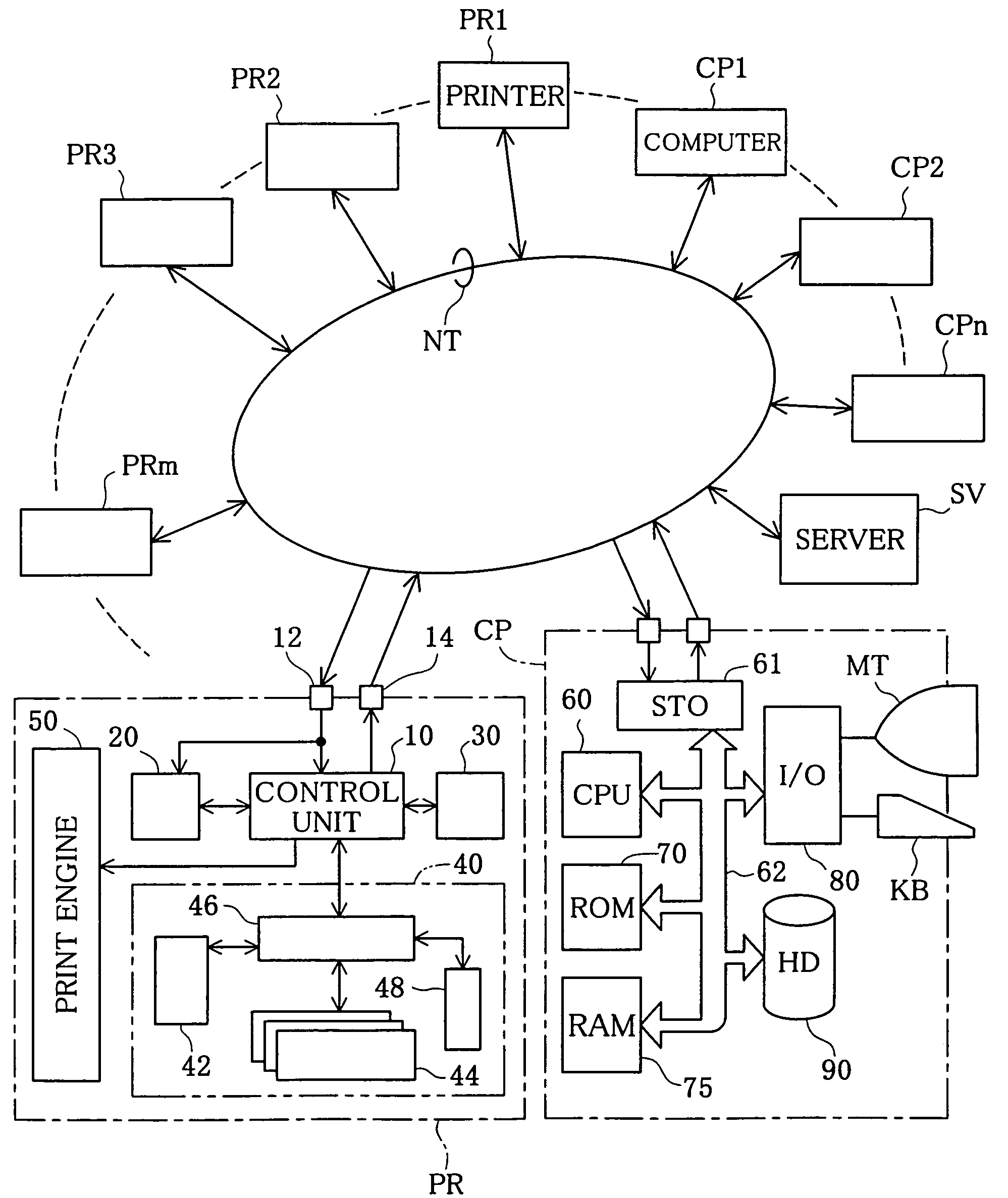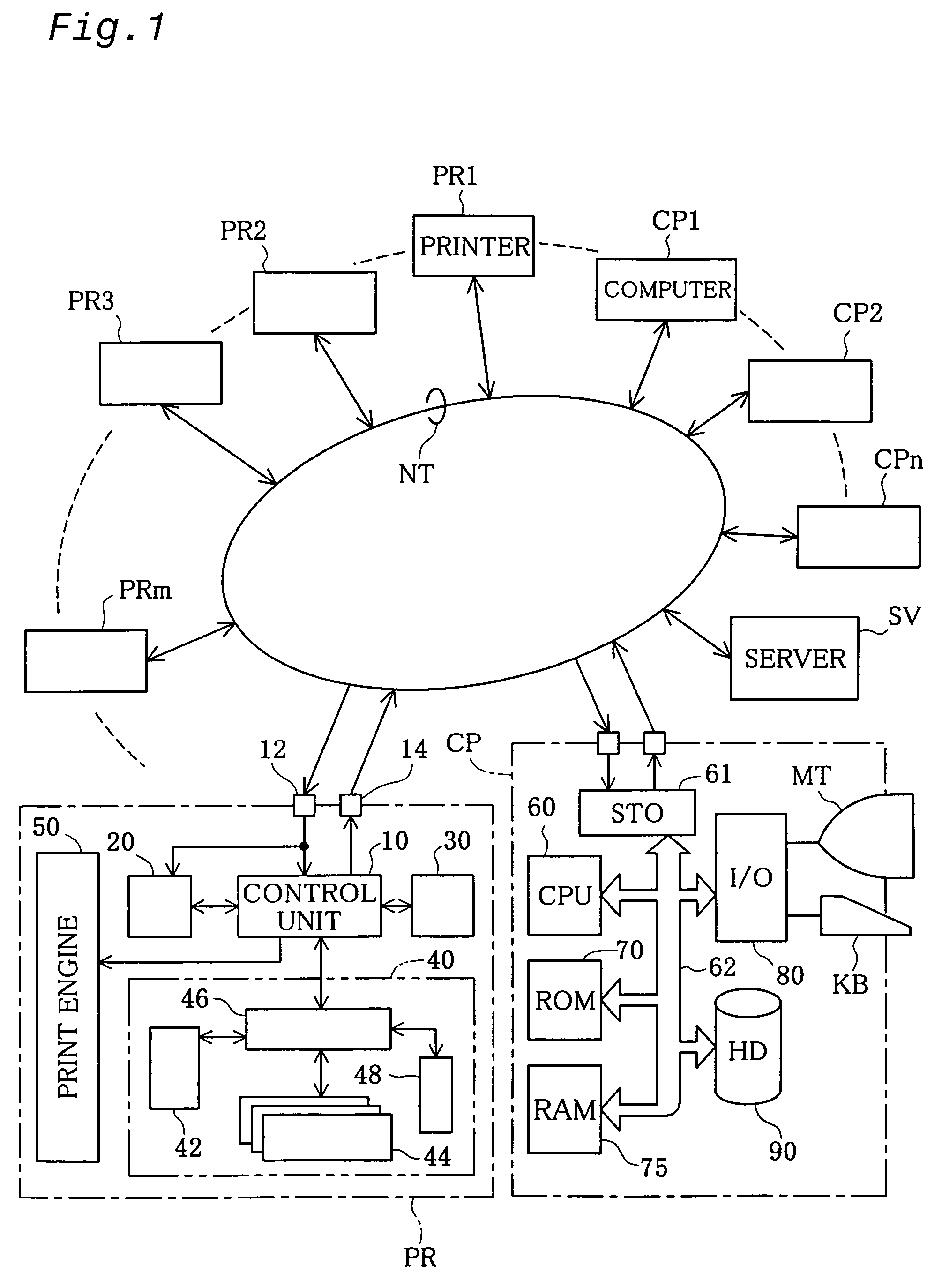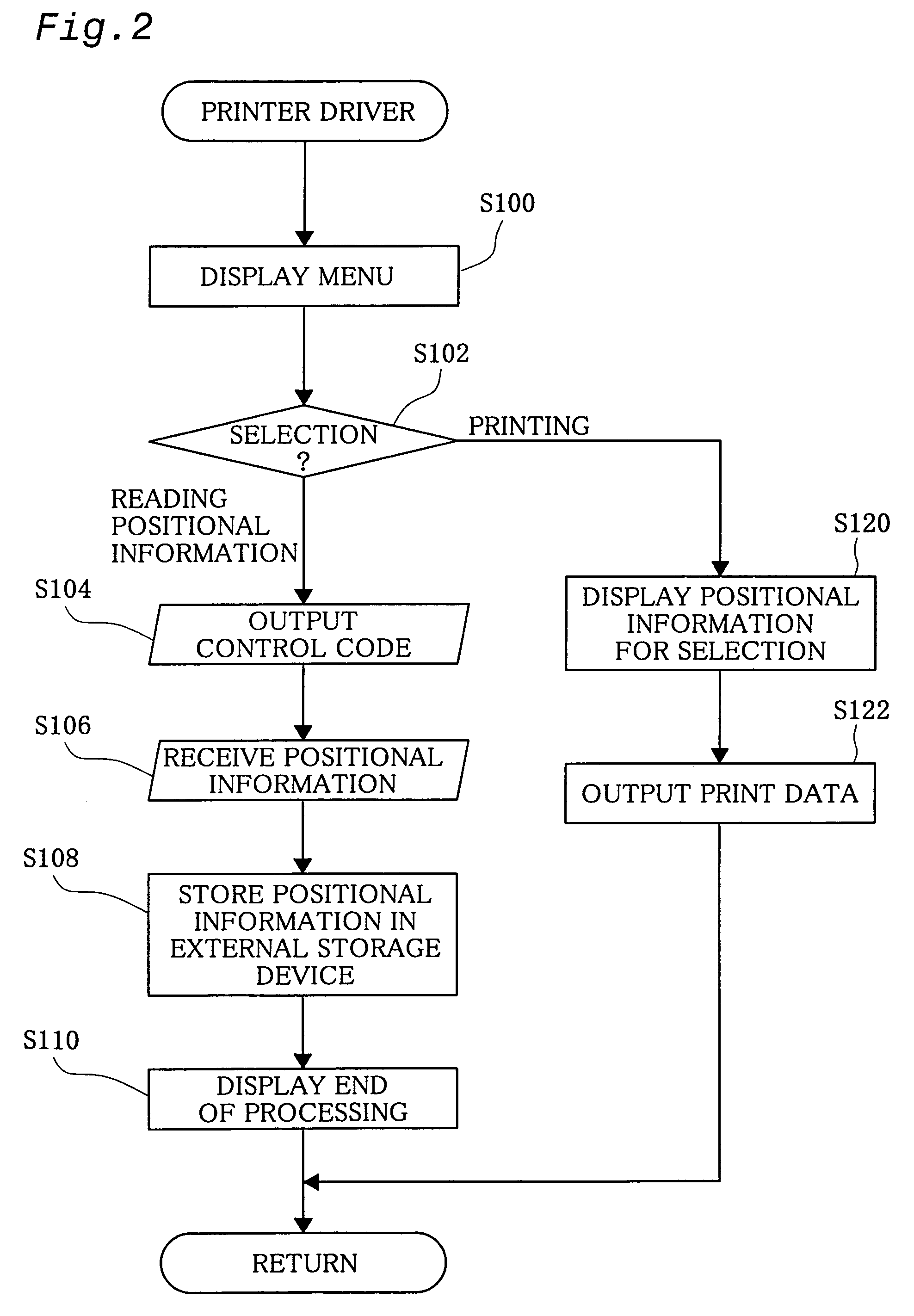Printers with positional sensors
a position sensor and printer technology, applied in the field of printers, can solve the problems of inconvenient use of printers on other floors of users' unfamiliarity, inability to ensure the sufficient facilities of larger-scaled networks, and difficulty in managing and maintaining the system
- Summary
- Abstract
- Description
- Claims
- Application Information
AI Technical Summary
Benefits of technology
Problems solved by technology
Method used
Image
Examples
Embodiment Construction
[0065]FIG. 1 is a block diagram illustrating a network NT in one embodiment according to the present invention. The network NT shown in FIG. 1 is formed by a number of computers CP1 through CPn (n is an arbitrary natural number), a number of printers PR1 through PRm (m is an arbitrary natural number), and a network server (hereinafter simply referred to as the server) SV having the functions of a printer server. The server SV manages the computers CP and the printers PR connected to the network NT using IP addresses. Whenever each of the computers CPn and the printers PRm is connected to the network NT with a supply of power, an intrinsic IP address is allocated to the computer CPn or the printer PRm by the server SV. Each computer CPn that requires printing outputs the print data to a desired printer PRm managed by the server SV. The server SV once spools the output print data and successively outputs the print data to the desired printer PRm, so as to cause printing to be carried ...
PUM
 Login to View More
Login to View More Abstract
Description
Claims
Application Information
 Login to View More
Login to View More - R&D
- Intellectual Property
- Life Sciences
- Materials
- Tech Scout
- Unparalleled Data Quality
- Higher Quality Content
- 60% Fewer Hallucinations
Browse by: Latest US Patents, China's latest patents, Technical Efficacy Thesaurus, Application Domain, Technology Topic, Popular Technical Reports.
© 2025 PatSnap. All rights reserved.Legal|Privacy policy|Modern Slavery Act Transparency Statement|Sitemap|About US| Contact US: help@patsnap.com



